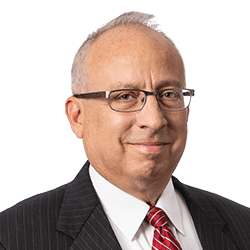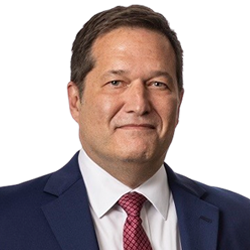Medical Causation Opinion Excluded in Toxic Exposure FELA Case
ABSTRACT: The Eighth Circuit Court of Appeals, applying Federal Rule 702 and Daubert, affirmed the U.S. District Court’s exclusion of a medical causation expert’s testimony, which claimed to apply differential diagnosis, but did so in a faulty manner.
Plaintiff Lancaster brought suit in the United States District Court for the District of Nebraska claiming that her husband’s lung cancer was caused by his exposure to diesel exhaust, silica and asbestos during his 33-year career with BNSF Railway Company (“BNSF”). BNSF moved for summary judgment arguing that Plaintiff’s experts failed to base their opinions on sufficient and admissible evidence to establish causation. Plaintiff retained two experts, Dr. Zimmerman, a Ph.D. who provided an industrial hygiene opinion, and Dr. Chiodo, an M.D. who provided a “medical causation opinion.”
Mr. Lancaster was a trackman and foreman from 1974 through 2007. He worked in the office a few hours a week as a section foreman, which had the potential to expose him to asbestos according to Zimmerman. Zimmerman was unable to quantitatively determine Mr. Lancaster’s exposures to diesel exhaust or asbestos due to the lack of air monitoring but based on the testimony regarding Lancaster’s work around silica dust from dumping and tamping of ballast stone, he concluded that Lancaster was exposed to silica in levels that exceeded safe levels and at times were dangerously high.
Dr. Chiodo’s opinion was predicated on Zimmerman’s exposure opinions. Unfortunately, Dr. Chiodo’s recitation of Zimmerman’s exposure opinions was inaccurate and flawed. Dr. Chiodo believed Zimmerman opined that “Lancaster was exposed to silica, asbestos and diesel exhaust above and beyond what the average person would be exposed.”
The Federal Employers’ Liability Act requires a plaintiff to plead and prove the common law elements of negligence. Typically, in order to establish the connection between the injury and alleged exposure, expert evidence is required. A medical expert’s proper role is not only to prove that the alleged exposure is capable of causing an injury, but that it caused the particular injury alleged by plaintiff.
Under the Federal Rules of Evidence, Rule 702 an expert’s testimony is admissible if (1) it is based on sufficient facts or data, (2) it is a product of reliable principles and methods and (3) the application of the principles and methods has been completed reliably. A court under Rule 702 may conclude that there is “simply too great an analytical gap between the data and the opinion proffered.”
Although BNSF argued that both Zimmerman’s and Chiodo’s opinions were insufficient under Rule 702, the District Court admitted Zimmerman’s opinion, concluding that it was based on reliable and sufficient data and that he accurately applied reliable methods to the facts. As typical in a Rule 702 analysis, the trial court observed that any alleged deficiencies in an expert’s techniques would be addressed at trial through cross-examination, as these issues go towards weight and not admissibility.
Dr. Chiodo’s opinion, however, was found to be deficient. According to Dr. Chiodo, Lancaster was exposed to cigarettes, asbestos, diesel combustion fumes and silica and anyone could have caused his cancer. Dr. Chiodo simply opined that Lancaster was exposed to all four carcinogens, in some unknown amount, and each could have caused his cancer. The District Court concluded that Dr. Chiodo’s opinion was connected to the data solely by the “ipse dixit” of the expert.
Although Dr. Chiodo claimed he performed a differential diagnosis analysis, he cited four separate potential causes, failed to support his determination with any evidence, and significantly, failed to rule out any of the potential causes of Mr. Lancaster’s lung cancer. He also failed to rule out Lancaster’s smoking as a non-occupational potential cause of his lung cancer, which the District Court pointed out undermined Dr. Chiodo’s differential etiology. The District Court therefore held that Dr. Chiodo’s opinions and testimony did not “bridge the gap between general and specific causation.”
The United States Court of Appeals for the Eighth Circuit agreed with District Court and affirmed its granting of summary judgment in BNSF’s favor. Specifically, the Eighth Circuit pointed out that there was no direct evidence that Lancaster was exposed to asbestos or diesel combustion fumes and more importantly there was no evidence of the level of exposure. Since there was no evidence for the factfinder to conclude that Lancaster was exposed to levels known to cause the injury claimed by him, Dr. Chiodo’s opinions were speculative. Dr. Chiodo’s opinions lacked sufficient foundation which directly impacted his methodology. The Eighth Circuit found that Dr. Chiodo was unable to support causation and that was enough by itself to grant summary judgment in favor of BNSF. Id.
Because Dr. Chiodo is an oft-utilized plaintiff expert in FELA toxic exposure cases, the Eighth Circuit’s decision may be beneficial to defendants seeking to exclude Dr. Chiodo’s opinions in the future.related services
About Transportation Law Blog
Baker Sterchi's Transportation Law Blog explores significant issues and developments of interest to various participants in the aerospace, railroad, and trucking communities. Topics range from proposed regulatory changes to key court decisions. Learn more about our aerospace, automotive and heavy equipment, railroad and trucking practices.
Subscribe via email
Subscribe to rss feeds
RSS FeedsABOUT baker sterchi blogs
Baker Sterchi Cowden & Rice LLC (Baker Sterchi) publishes this website as a service to our clients, colleagues and others, for informational purposes only. These materials are not intended to create an attorney-client relationship, and are not a substitute for sound legal advice. You should not base any action or lack of action on any information included in our website, without first seeking appropriate legal or other professional advice. If you contact us through our website or via email, no attorney-client relationship is created, and no confidential information should be transmitted. Communication with Baker Sterchi by e-mail or other transmissions over the Internet may not be secure, and you should not send confidential electronic messages that are not adequately encrypted.
The hiring of an attorney is an important decision, which should not be based solely on information appearing on our website. To the extent our website has provided links to other Internet resources, those links are not under our control, and we are not responsible for their content. We do our best to provide you current, accurate information; however, we cannot guarantee that this information is the most current, correct or complete. In addition, you should not take this information as a promise or indication of future results.
Disclaimer
The Transportation Law Blog is made available by Baker Sterchi Cowden & Rice LLC for educational purposes only as well as to give you general information and a general understanding of the law, not to provide specific legal advice. Your use of this blog site alone creates no attorney client relationship between you and the firm.
Confidential information
Do not include confidential information in comments or other feedback or messages related to the Transportation Law Blog, as these are neither confidential nor secure methods of communicating with attorneys. The Transportation Law Blog should not be used as a substitute for competent legal advice from a licensed professional attorney in your state.













